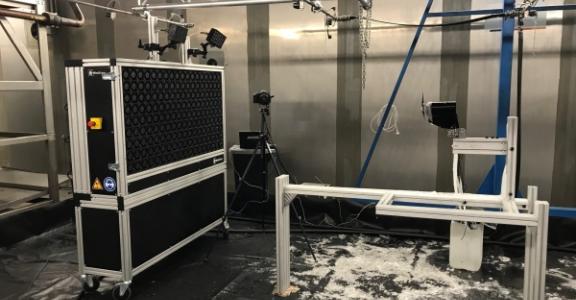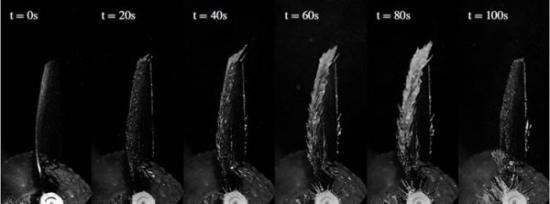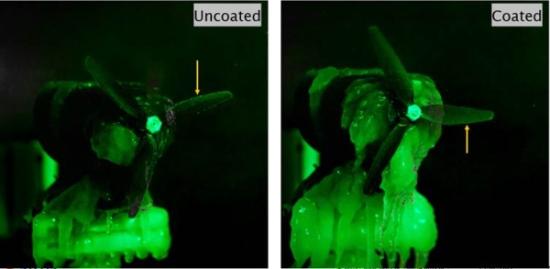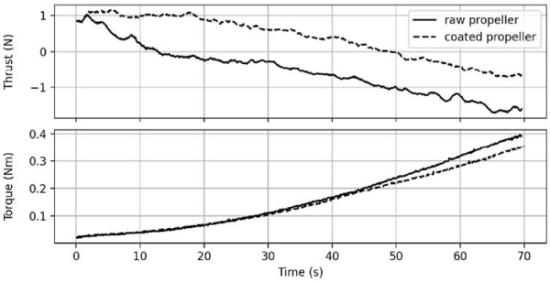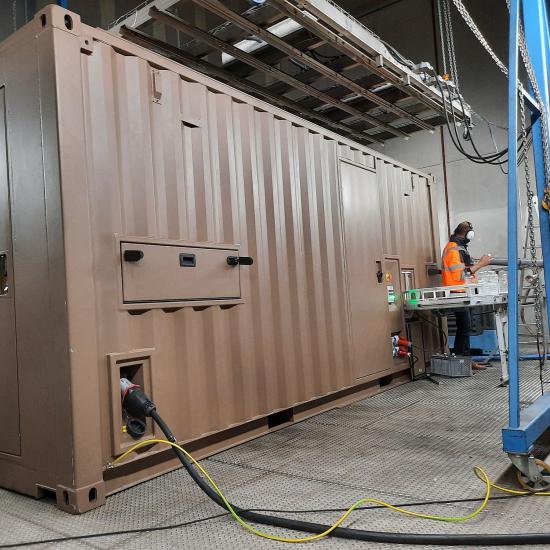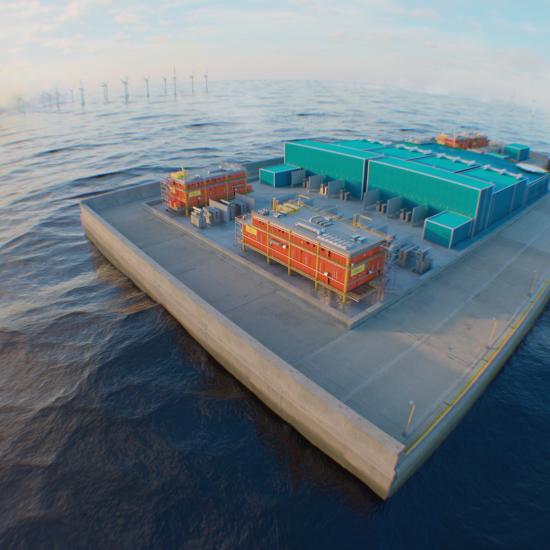Understanding behaviour and performance of drones in adverse weather and harsh flight environments is a prerequisite to developing meaningful test protocols for the validation and certification of these flying systems. An exploratory work investigates the development of a method for characterising the performance of propellers in laboratory icing conditions, as considered the most critical. This research was enabled by the use of a climatic chamber featuring an array of water nozzles that makes it possible to generate icing condition, in combination with a windshaper.
Rotorcrafts - commonly known as drones or UAV - continue to draw interest as their capabilities and performances are growing year after year. One of the limitations to their use for commercial applications is the lack of a clear established regulation. In particular, there is no solution yet for the validation of such aircrafts in well-defined wind/weather configurations. As a result, manufacturers have no choice but to test their flying vehicles outdoors, which makes the validation process inefficient to impossible. The testing methodology suffers from many drawbacks, including poor accuracy, lack of reproducibility, dependence on day-by-day weather forecast, unknown and non-controllable test conditions, short test times, and large distance between drone and tester. Additionally, it is challenging for those who want to test drones in a specific environment to chase down the proper weather and climate conditions, such as icing conditions. Consequently, it is yet still difficult to assess and evaluate drone airworthiness while it is becoming a necessary procedure to enable new commercial applications.
One of the challenges that lies in the assessment of drone performance is to understand their behaviour in adverse wind. WindShape has been developing the windshaper - a new kind of wind generating facilities which consists of an array of a large number of small fans (wind-pixels), to generate an infinity of time- and spatially-variable wind profiles - to study the behaviour of free-flying drones in reconstructed wind and weather situations. Another challenge is to be able to test and validate drones in cold conditions, and more particularly where icing could occur. Icing can quickly become fatal and it will only be after an established test method exists that drones will have the possibility to be certified to fly in such conditions.
In the last few years, several groups worldwide have been tackling the issue of UAV propeller icing in climatic wind tunnels. Sirris operates one of Europe’s largest climate chamber that features a unique array of water injectors designed to generate icing conditions in the chamber. Combining the two facilities, by installing a windshaper inside the climate chamber, makes it possible to test drones in free-flight in any desired situation.
Testing under realistic conditions
In the present study, the authors presents a method for analysing the performance of drone propulsion systems only. A total of 21 tests were done. The parameter that were varied during these tests were propeller speed (3,500 rpm and 5,000 rpm), wind speed (3.2 m/s, 6 m/s and 9 m/s) and spray water pressure (2 bar and 8 bar with droplet diameters of approx. 300 µm and 800 µm respectively). The tests were done with a raw plastic propeller and with a similar propeller coated with anti-icing material.
Experiments were performed in Sirris’s Large Climatic Test facility, where recently an icing test set-up was built, consisting of a nozzle array with 25 nozzles. In order to generate the apparent wind on the propeller, a windshaper was used. The propulsion units to be tested were mounted on a test stand, which consists of a two-axis force balance capable of measuring propulsion thrust up to 50 N, and motor torque up to 1.5 Nm. In order to visualise the formation of ice on the propeller, an automatic and precise image capture system was engineered.
Figure 1: Ice formation with time visible on an uncoated propeller (@ 6 m/s wind speed and 3,500 rpm)Conclusions
A method for characterising propulsion units in a combination of wind and icing conditions was developed and tested. Although the number of tests was limited, the following conclusions and observations can still be shared:
- The present setup allows a variety of situations for ice structures to grow on the propeller blades.
- The design of the visualisation system enables the evolution of ice accretion on the propeller blades to be captured on camera.
- The propeller test stand enables an accurate measurement of the propulsion unit performances such as thrust, torque, ice weight, and propeller mechanical efficiency.
- Using the windshaper in the climatic chamber is a good option for combining wind and cold conditions
- This setup allowed testing of coated and non-coated propellers for different icing conditions in a very short time thanks to lesser complexities in operations compared to icing wind tunnels, such as ease of access to the test items, large working space, etc.
- Clear benefit of anti-icing coating on propellers was observed (Figure 2): the coated propeller produced thrust almost four times longer in icing conditions compared to the non-coated one (Figure 3).
This exploratory study already shows that combination of windshaper with a nozzle array setup in a climatic facility can be a viable method to quantifying the performance of drone propulsion units in icing conditions.
This blog has been summarised from the paper published in AIAA Aviation Forum held in August 2021. The full article can be downloaded from here.
Icing is the cause of many problems and risk that occur on a daily basis during activities or the operation of machines. At Sirris a number of our experts have started to expand their knowledge of atmospheric icing and find methods to limit icing. These activities are a part of the COOCK projects Fighting Icing and NewSkin. Our acquired knowledge has been brought together in three white papers, which you can now download for free.
